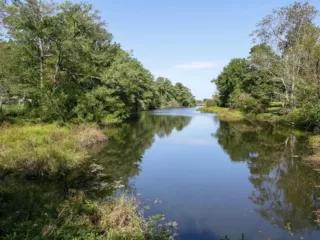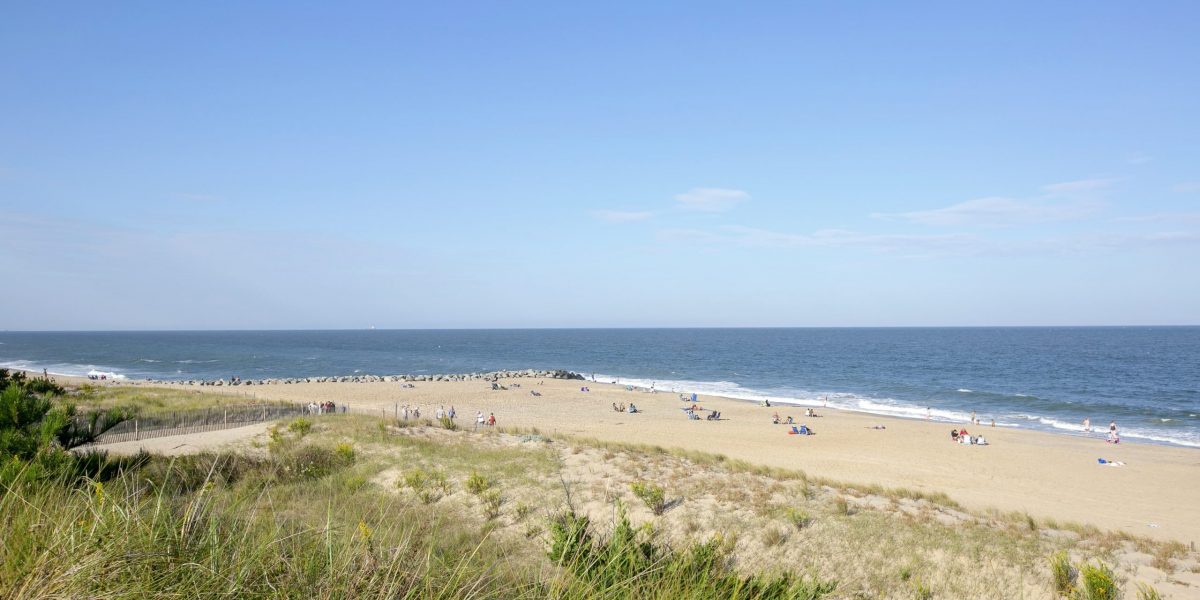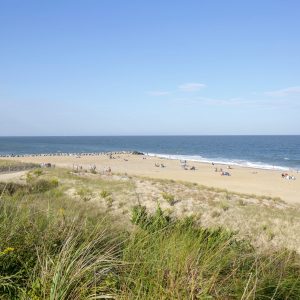Birds Native to Delaware

Birds Native to Delaware
Some of Delawonder’s most exotic wildlife can be found zipping across the sky. You can find Delaware shore birds, Delaware state birds, Delaware birds of prey and more. So whether you’re looking out for the most common birds in Delaware or some of the rarer birds native to Delaware, there’s always something to spot as you amble down this beautiful state.
Take the opportunity to spot some of the area’s most elusive creatures with our Delaware birds list. Here we’ve listed some of the most beautiful and noble birds that can be found across Delaware. How many can you find?
NOTE: Always practice bird safety. Please be considerate when spotting or photographing the birds of Delaware so as not to disrupt them in their natural habitat.
White-throated sparrow
Keep an eye out in brush piles and bird feeders for these little creatures. Easily distinguishable by their bright white throat and distinctive black-and-white striped head, white-throated sparrows tend to travel in flocks. They’re most commonly seen during the winter months, so wrap up warm if you’re on the lookout!
Color:
- Brown back
- Gray underbelly
- White throat
- Yellow around the eyes
Average size:
- Length: 6.3-7.1 in
- Weight: 0.8-1.1 oz
- Wingspan: 7.9-9.1 in
Habitat:
- Woods
- Forest edges
- Ponds/bog edges
Did you know? The oldest recorded white-throated sparrow was over 14 years old!
Snowy egret
The snowy egret is a large wading bird that visits Delaware during its migration. Sizable and bright white in color, the snowy egret shouldn’t be too difficult to spot — but don’t get it confused by the similar-looking great egret! While both have similar features, the snowy egret can be distinguished from the great egret by its black beak and splash of yellow around the eyes.
Color:
- White body
- Black bill
- Black legs
- Yellow feet
- Yellow around the eyes
Average size:
- Length: 22.1-26 in
- Weight: 13.1 oz
- Wingspan: 39.4 in
Habitat:
- Coast
- Mudflats
- Wetlands
Did you know? Male and female snowy egrets take turns incubating their eggs. When they change over, they sometimes present the other with a stick — almost like passing a baton!
Great Blue Heron
The great blue heron is identifiable by the prominent curve in its neck and the blue stripe on its head. At around 4ft tall, the great blue heron is the largest heron in North America. If you’re on the lookout, you’ll want to visit the various wetlands, as these birds are rarely seen far from water.
Color:
- Blue-gray body
- Wide dark blue stripe on the head
Average size:
- Length: 38.2-53.9 in
- Weight: 74.1-88.2 oz
- Wingspan: 65.8-79.1 in
Habitat:
- Open coasts
- Marshes
- Sloughs
Did you know? Despite their large size, great blue herons weigh so little because they have such hollow bones!
Eastern screech owl
You might hear this owl before you spot it — it is known for its distinctive sharp hoots, typically indicating alarm or agitation. You might find it nesting in wood-duck boxes over winter. Don’t be alarmed if you hear its cry — it will point you in the right direction.
Color:
- Gray or reddish-brown body
- Yellow eyes
Average size:
- Length: 6.3-9.8 in
- Weight: 4.3-8.6 oz
- Wingspan: 18.9-24.0 in
Habitat:
- Trees
- Woods, particularly near water
Did you know? Screech owls regurgitate the bones and feathers of their prey into a pellet every day!
European Starling
Though these stocky birds aren’t native to the area, you can catch glimpses of their iridescent purple and green feathers as they pass through. Starlings are noisy characters, and you might catch them being boisterous atop power lines or with their beaks down in the grass foraging for worms.
Color:
- Iridescent purple-green body
- Yellow beak
Average size:
- Length: 7.9-9.1 in
- Weight: 2.1-3.4 oz
- Wingspan: 12.2-15.8 in
Habitat:
- Towns
- Suburbs
- Countryside
Did you know? Any European starling you spot in Delaware will have descended from just 100 birds that were set loose in New York’s Central Park over 100 years ago!
Bald eagle
What is the state bird and flower of Delaware? While you might spot a few Peach Blossoms on your trip around the area, the state bird may be a little harder to spot. The bald eagle is the state bird of Delaware and can typically be found pottering around water waiting for its next catch. It can fly and dive at speeds of up to 30mph and 100mph respectively, so don’t blink or you might miss it!
Color:
- White heads
- Dark brown bodies and wings
- Bright yellow legs and bills
Average size:
- Length: 27.9-37.8 in
- Weight: 105.8-222.2 oz
- Wingspan: 80.3 in
Habitat:
- Lakes
- Reservoirs
- Rivers
- Marshes
- Coasts
Did you know? A bald eagle nest in Vermilion, Ohio became famous for its astonishing size and shape. The nest was shaped like a wine glass and weighed almost two metric tons!
Tufted titmouse
Found in woodlands and parks asserting their dominance over smaller birds, the tufted titmouse is a beautiful gray bird with large eyes and a whiteunderbelly sporting a distinctive gray crest. You can attract tufted titmice to your backyard by adding sunflower seeds and peanuts to your feeder. Be careful how much you put out though, or you might get more visitors than you bargained for.
Color:
- Silvery gray back
- White underbelly
- Peach wash down the flanks
- Black patch above the bill
Average size:
- Length: 5.5-6.3 in
- Weight: 0.6-0.9 oz
- Wingspan: 7.9-10.2 in
Habitat:
- Woodlands
- Backyards
- Parks
Did you know? Tufted Titmouse tend to line their nest with hair, often plucked directly from living animals!
Osprey
Also known as the sea hawk, this fish-eating bird of prey may be found around water during its breeding season. You might also spot its nests on man-made structures, including the various nesting platforms peppered throughout Delaware’s marshes.
Color:
- Brown back
- White underbelly
- White head
- Broad brown stripe through the eye
Average size:
- Length: 21.3-22.8 in
- Weight: 49.4-70.5 oz
- Wingspan: 59.1-70.9 in
Habitat:
- Saltmarshes
- Rivers
- Reservoirs
Did you know? Ospreys possess barbed pads on the soles of their feet to help them grip slippery fish!
Did you find all eight? There are plenty more birds to discover in Southern Delaware. From backyard birds to black birds in Delaware, visit our website to view our full list of birds in Delaware.








